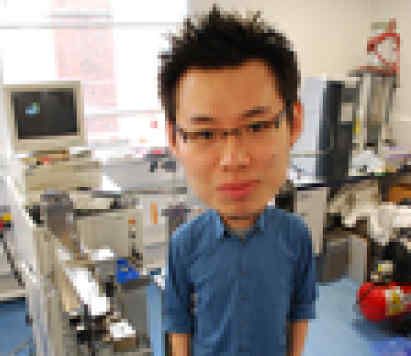BibTex format
@article{Nawawi:2020:10.1021/acs.biomac.9b01141,
author = {Nawawi, WMFBW and Jones, M and Murphy, RJ and Lee, K-Y and Kontturi, E and Bismarck, A},
doi = {10.1021/acs.biomac.9b01141},
journal = {Biomacromolecules},
pages = {30--55},
title = {Nanomaterials derived from fungal sources-is It the new hype?},
url = {http://dx.doi.org/10.1021/acs.biomac.9b01141},
volume = {21},
year = {2020}
}
RIS format (EndNote, RefMan)
TY - JOUR
AB - Greener alternatives to synthetic polymers are constantly being investigated and sought after. Chitin is a natural polysaccharide that gives structural support to crustacean shells, insect exoskeletons, and fungal cell walls. Like cellulose, chitin resides in nanosized structural elements that can be isolated as nanofibers and nanocrystals by various top-down approaches, targeted at disintegrating the native construct. Chitin has, however, been largely overshadowed by cellulose when discussing the materials aspects of the nanosized components. This Perspective presents a thorough overview of chitin-related materials research with an analytical focus on nanocomposites and nanopapers. The red line running through the text emphasizes the use of fungal chitin that represents several advantages over the more popular crustacean sources, particularly in terms of nanofiber isolation from the native matrix. In addition, many β-glucans are preserved in chitin upon its isolation from the fungal matrix, enabling new horizons for various engineering solutions.
AU - Nawawi,WMFBW
AU - Jones,M
AU - Murphy,RJ
AU - Lee,K-Y
AU - Kontturi,E
AU - Bismarck,A
DO - 10.1021/acs.biomac.9b01141
EP - 55
PY - 2020///
SN - 1525-7797
SP - 30
TI - Nanomaterials derived from fungal sources-is It the new hype?
T2 - Biomacromolecules
UR - http://dx.doi.org/10.1021/acs.biomac.9b01141
UR - https://www.ncbi.nlm.nih.gov/pubmed/31592650
UR - https://pubs.acs.org/doi/10.1021/acs.biomac.9b01141
UR - http://hdl.handle.net/10044/1/75581
VL - 21
ER -
